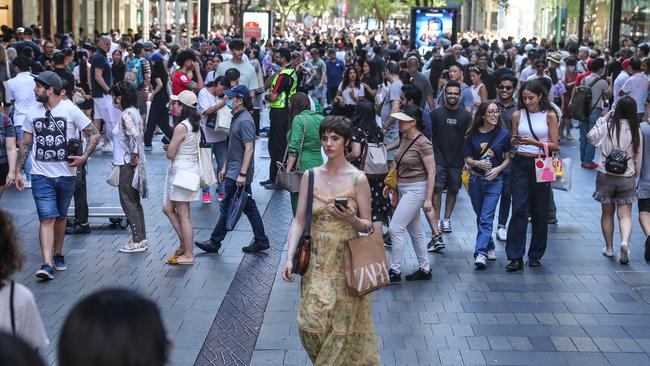
You don’t need to be a clairvoyant to gauge that a period of uncertainty lies ahead for households and businesses as the inflationary pressures increase in 2023.
Retailers have done a phenomenal job fortifying ahead of the metaphorical long winter. Our forecasts for the all-important Christmas trading period had sales at a record and the new year’s transition certainly hasn’t dampened the appetite for shopping – most are celebrating their new-found liberties after three challenging years living with a pandemic.
Post-Christmas sales are projected to notch another record of $23.5bn, up 7.9 per cent.
But the adage of calm before the storm may ring true here – and many economists are flagging a widespread economic slowdown at some point in 2023.
Tumultuous economic conditions certainly aren’t uncharted waters for retailers. They have been in a permanent state of disruption and rolling with the punches, particularly through the pandemic.

Pleasingly, CBD retailers who were hardest hit are saying weekends are back to pre-pandemic levels and some weekdays are slowly recovering – predominantly suffering from the segue to working from home.
The CBD retail machine has been permanently disrupted and now requires a new strategy to attract shoppers who are not workers.
The key is in the ideation of a 24-hour economy and shifting the focus from day to night. Twilight hours are important to ensure it’s a full experience. Indulging the five senses is key.
Go for lunch, shop, stop to recharge with a coffee and top it all off with a live performance or show, then on to dinner and possibly a club or bar afterwards. Take in the sights and sounds that only a city can provide.
Shopping continues to be Australia’s favourite sport, and the resilience of travel retail in particular is a great modern-day Rocky tale. Some experts declared travel agencies, holiday-makers and the like would be down for the count. But slowly and surely, they’re getting back up.
There are still challenges; holiday costs are at a premium and some travellers are wary of a Covid-derailed itinerary. But for the most part, the sector has slipped the jabs thrown their way with prowess.

The playing field for hairdressers and beauty therapists has also changed. They’re running a team relay race, but the fourth runner is nowhere to be seen. The biggest hurdle for this sector is a crippling shortage of talent, exacerbated by the lack of foreign workers – labour shortages lingering from the pandemic.
The Australian Retailers Association has been sounding the alarm on labour shortages throughout 2022 and we must see this addressed in 2023 to allow a true economic recovery.
The ARA has championed change in this area, successfully advocating for the extension of extended international student working hours, the introduction of mature-worker tax incentives and a national approach to minimum-age workers. There isn’t necessarily one silver bullet fix for labour shortages, but rather the need for a multifaceted approach.
We are calling on the government to diversify the workforce by removing barriers to participation, streamlining immigration processes, investing in skills and connecting jobseekers to employers through vocational training and pathways to secure jobs, and simplifying and modernising the award system – creating flexibility to benefit both employees and employers.

The reality in our own Back to the Future, today in 2023, is very different from that of which we would have anticipated even just four years ago. We can’t hit the “flux capacitor” and turn back the clock. We need to adapt to change.
The pandemic accelerated trends that were already occurring in the industry. The move to online shopping and the need for the shopping experience to both be seamless and contactless have been profound. It’s a known fact that crises drives innovation; the adoption of click and collect, the creation of direct to boot and the love of shopping cashless continued to be embraced by shoppers.
The pandemic also reversed some trends. The move from globalisation to localisation with more manufacturing being considered locally to shore up supply chains. Buying and shopping local has rarely been more coveted.
The stars may have fortuitously aligned during the pandemic, but much like astronomers, the industry is staring down a vast of the unknown. We are working and hoping as an industry that the universe will provide, but the word on the street is “batten down the hatches”.
Winter is coming – but another spring will be just on the horizon.
Paul Zahra is chief executive of the Australian Retailers Association




Riding a wave of momentum on the back of this year’s “Freedom Christmas”, retailers are now facing a nervous wait for the tide to turn.